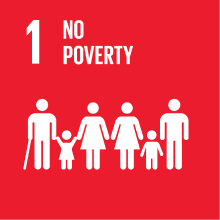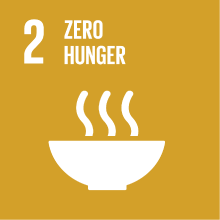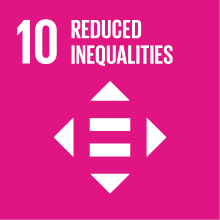ETHNOGRAPHY OF SHAMANISM
- Academic year
- 2025/2026 Syllabus of previous years
- Official course title
- ETNOGRAFIA DELLO SCIAMANESIMO
- Course code
- LM2280 (AF:568692 AR:326308)
- Teaching language
- Italian
- Modality
- On campus classes
- ECTS credits
- 6
- Degree level
- Master's Degree Programme (DM270)
- Academic Discipline
- L-OR/17
- Period
- 1st Semester
- Where
- VENEZIA
Contribution of the course to the overall degree programme goals
Expected learning outcomes
Pre-requirements
Contents
2) Ethnography of shamanism (study organized under the following topics):
- Cosmology and worldview
- The Call and Initiation
- The Spirit World
- Shamanic Rituals and possession
- Healing and exorcism
- Music and Entheogens
- Shamanic Art (artefacts, objects, songs, etc.)
- Shamanic Revitalization and Neoshamanism
3) during the lectures, relevant documentary films and videos will be screened
Referral texts
- Stefano Beggiora (a cura di), Il cosmo sciamanico. Ontologie indigene fra Asia e Americhe, Franco Angeli Editore, Milano, 2019
Elective:
- Stefano Beggiora, Mostri, spettri e demoni dell'Himalaya. Un'indagine etnografica fra mito e folklore, METI Edizioni, Torino 2016 (ISBN 978-88-6484-022-2).
- Margaret Stutley, Shamanism an Introduction, Routledge 2003 - Mircea Eliade, Lo sciamanismo e le tecniche dell’estasi, Edizione Mediterranee, Roma (varie edizioni)
- Thomas A. Dubois, An Introduction to Shamanism, Cambridge University Press 2009.
- Stefano Beggiora, Sonum Spiriti della giungla Lo sciamanismo delle tribù Saora dell’Orissa, Franco Angeli Editore, Milano, 2003.
- A. Rigopoulos, R. Mastromattei (eds.), Shamanic Cosmos. From India to the North Pole Star, D. K. Printworld, New Delhi, 1999.
- Neil price, Archaeology of Shamanism, Routledge, London, 2001.
- Ugo Marazzi (a cura di) 2009, Testi dello sciamanismo siberiano e centro asiatico, UTET, Torino (I ediz. 1984).
- Shirley Nicholson, Shamanism, Quest Book, Wheaton IL, 2014.
- Joan Halifax, Shaman, the Wounded Healer, Thames and Hudson, 1997, London.
- Kakar Sudhir (1982), Shamans, Mystic and Doctors. A Psychological Inquiry into India and its Healing Traditions, Oxford University Press, 1982 (it: Sciamani, mistici, dottori, ed. Pratiche).
- Casadio Giovanni, Lo Sciamanesimo. Prima e dopo Mircea Eliade, il Calamo, Roma, 2014.
- Carlo Ginzburg, I benandanti. Stregoneria e culti agrari tra Cinquecento e Seicento, Einaudi Editore, Torino;
- Carlo Ginzburg, Storia Notturna una decifrazione del sabba, Einaudi Editore, Torino (varie ed).
- Franco Fabbro, Neuropsicologia dell'esperienza religiosa, Ubaldini, 2010.
- Vitebsky Piers, The Shaman, Duncan Baird Publishers, London, 1995.
- Marianna Ferrara (ed.) Corpi sciamanici. La nozione di persona nello studio sullo sciamanesimo, (coll. Sapienza Sciamanica), Roma, Edizioni Nuova Cultura, 2017.
- Davide Torri, Il lama e il bombo. Sciamanismo e buddhismo tra gli Hyolmo del Nepal, (coll. Sapienza Sciamanica), Roma, Edizioni Nuova Cultura, 2015.
- Gilbert Rouget, Musica e trance: i rapporti fra la musica e i fenomeni di possessione, Einaudi, Torino, 1986.
- Georges Lapassade, Dallo sciamano al raver, Urra/Apogeo (Feltrinelli) Milano, 2008.
- Claude Lecouteux, Witches, Werewolves and Fairies: Shapeshifters and Astral Doubles in the Middle Ages, 2003;
- Claude Lecouteux, Phantom Armies of the Night: The Wild Hunt and Ghostly Processions of the Undead, 2012, Inner Traditions, Rochester.
- Lia Zola, Paesaggi, luoghi e spazi sacri nello sciamanismo siberiano, Meti Edizioni, Torino, 2015.
- Ioan M. Lewis, Le religioni estatiche, Ubaldini (varie ed.).
- René de Nebesky-Wojkowitz, Oracles and Demons of Tibet: The Cult and Iconography of the Tibetan Protective Deities (The Hague: Mouton, 1956) Book Faith India, Delhi, 1996. - Vincent Bellezza, Spirit-Mediums, Sacred Mountains And Related Bon Textual Traditions In Upper Tibet: Calling Down The Gods, Brill, Leiden, 2005.
- Michael J. Harner, Hallucinogens and Shamanism, Oxford University Press, 1973.
- Åke Hultkrantz, Concezione dell’Anima tra gli Indiani del Nord America [S. Gallo ed. 'Soul and Native Americans'] Ester, Torino, 2016.
Any additional articles and selections from books will be provided by the teacher during the course
Assessment methods
The exam grade is measured in thirtieths (scale 0-30), the minimum grade is 18/30 and the maximum grade is 30/30. The maximum mark can be enriched with "cum laude" (30 with honors). The score is awarded on the basis of the candidate's overall preparation, on his/her ability and clarity of expression, on the awareness of the state of the art, on the ability to propose an investigation methodology, and on the coherence of the chosen topic with the general topic of the course. In the final slot of the moodle relating to the course, all the detailed instructions regarding the exam are available
Type of exam
Grading scale
A. Scores in the range of 18-21 will be attributed in the presence of:
Sufficient knowledge and ability to understand applied in reference to the program;
Limited ability to gather and/or interpret information, formulating independent judgments;
Adequate communicative skills, especially concerning the use of specific language related to the description of textual and historical-literary phenomena;
B. Scores in the range of 22-25 will be attributed in the presence of:
Decent knowledge and ability to understand applied in reference to the program;
Decent ability to gather and/or interpret information, formulating independent judgments;
Decent communicative skills, especially concerning the use of specific language related to the description of textual and historical-literary phenomena;
C. Scores in the range of 26-30 will be attributed in the presence of:
Good or excellent knowledge and ability to understand applied in reference to the program;
Good or excellent ability to gather and/or interpret information, formulating independent judgments;
Fully appropriate communicative skills, especially concerning the use of specific language related to the description of textual and historical-literary phenomena;
D. Honors will be awarded in the presence of excellent knowledge and ability to understand applied in reference to the program, judgment skills, and excellent communicative abilities.
In the final slot of the moodle relating to the course, all the detailed instructions regarding the exam are available
Teaching methods
Further information
2030 Agenda for Sustainable Development Goals
This subject deals with topics related to the macro-area "Poverty and inequalities" and contributes to the achievement of one or more goals of U. N. Agenda for Sustainable Development




